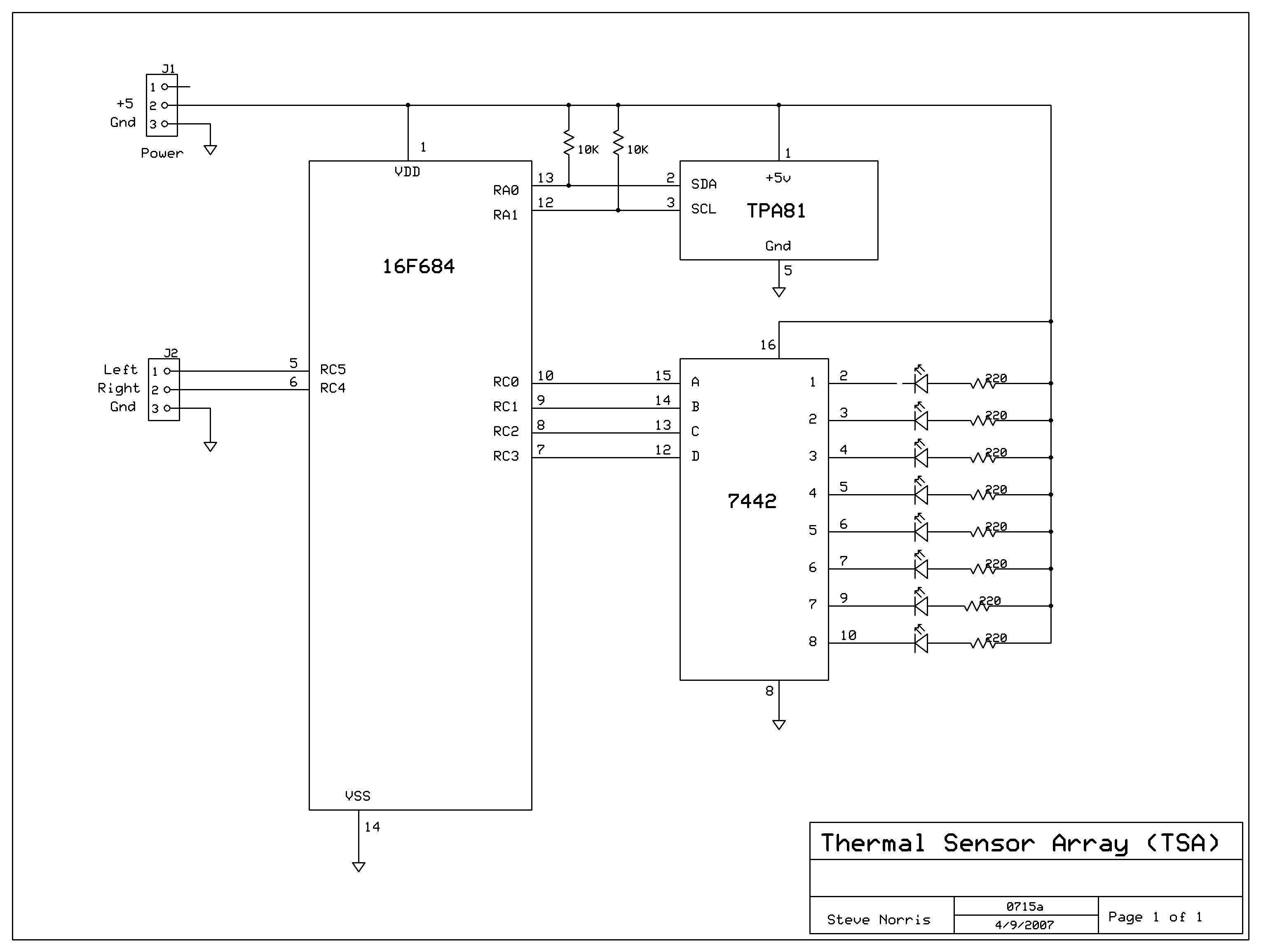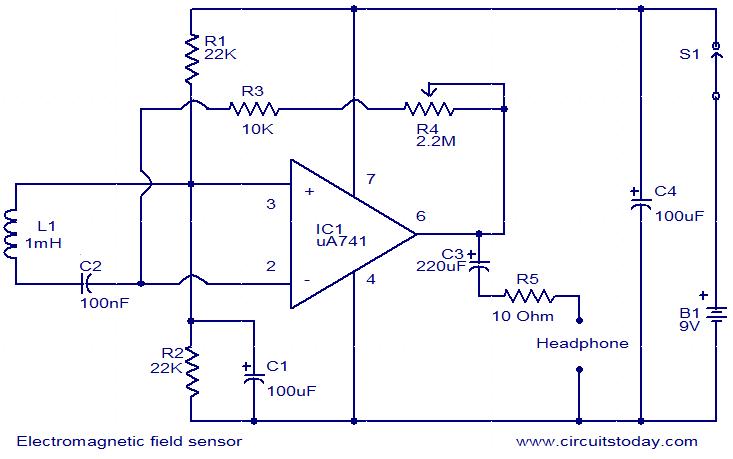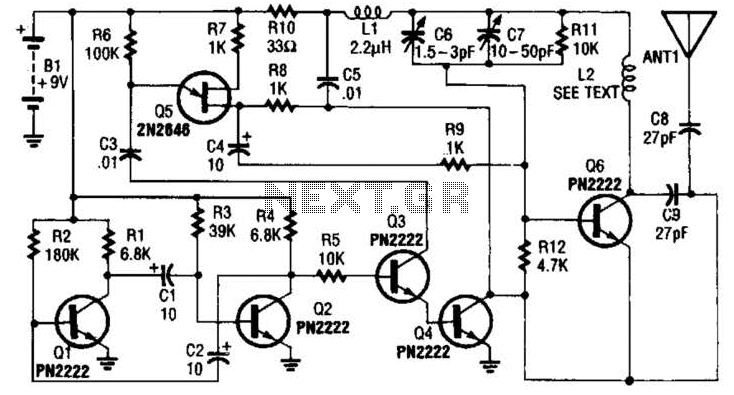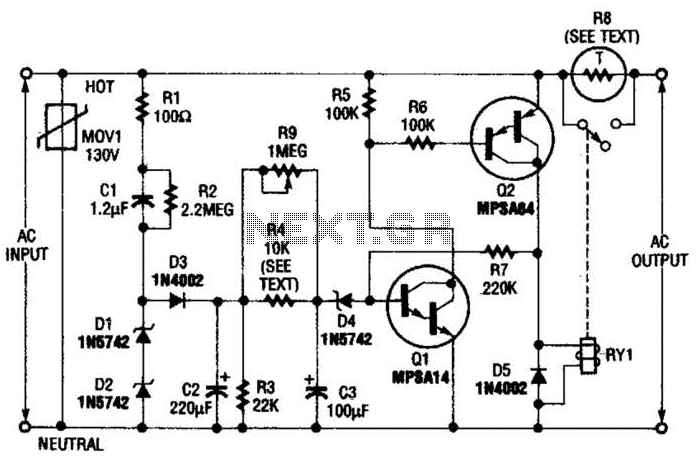
Plus resistive and capacitive silicon tube regulator phase trigger circuit
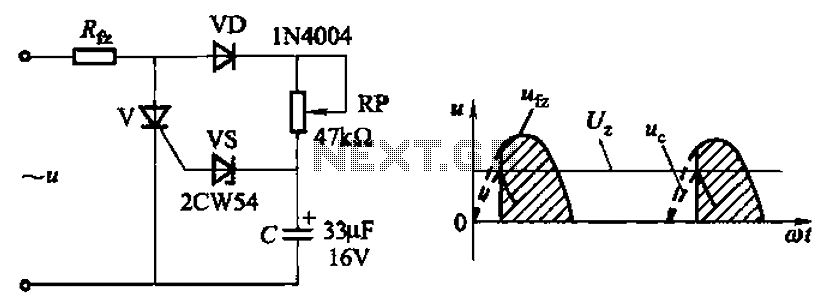
Circuit characteristics: A simple phase shift range of 180 degrees; exhibits good linearity and control accuracy compared to the first two options, making it suitable for low voltage applications, particularly in less demanding electroplating and electrolysis power supplies.
The described circuit features a phase shift that can be adjusted up to 180 degrees, which is essential for various applications in signal processing and control systems. The good linearity and control accuracy of this circuit allow for precise adjustments, making it ideal for scenarios where signal integrity is crucial. This characteristic is particularly beneficial in low voltage environments, where maintaining signal quality can be challenging.
In electroplating and electrolysis power supplies, the ability to control the phase shift effectively can enhance the efficiency of the process. For instance, in electroplating, controlling the phase can influence the deposition rate and quality of the plated material. A circuit designed with these characteristics can provide stable and reliable performance, ensuring that the electrochemical processes operate within optimal parameters.
The implementation of such a circuit might involve components like operational amplifiers, resistors, and capacitors configured to achieve the desired phase shift. Additionally, feedback mechanisms can be integrated to maintain control accuracy over varying load conditions. The overall design should consider thermal management and component ratings to ensure longevity and reliability in practical applications. Circuit characteristics: O simple phase shift range 180. ; good linearity, control accuracy than the first two, and is suitable for low voltage, but less demanding electroplati ng, electrolysis power supplies.
The described circuit features a phase shift that can be adjusted up to 180 degrees, which is essential for various applications in signal processing and control systems. The good linearity and control accuracy of this circuit allow for precise adjustments, making it ideal for scenarios where signal integrity is crucial. This characteristic is particularly beneficial in low voltage environments, where maintaining signal quality can be challenging.
In electroplating and electrolysis power supplies, the ability to control the phase shift effectively can enhance the efficiency of the process. For instance, in electroplating, controlling the phase can influence the deposition rate and quality of the plated material. A circuit designed with these characteristics can provide stable and reliable performance, ensuring that the electrochemical processes operate within optimal parameters.
The implementation of such a circuit might involve components like operational amplifiers, resistors, and capacitors configured to achieve the desired phase shift. Additionally, feedback mechanisms can be integrated to maintain control accuracy over varying load conditions. The overall design should consider thermal management and component ratings to ensure longevity and reliability in practical applications. Circuit characteristics: O simple phase shift range 180. ; good linearity, control accuracy than the first two, and is suitable for low voltage, but less demanding electroplati ng, electrolysis power supplies.

